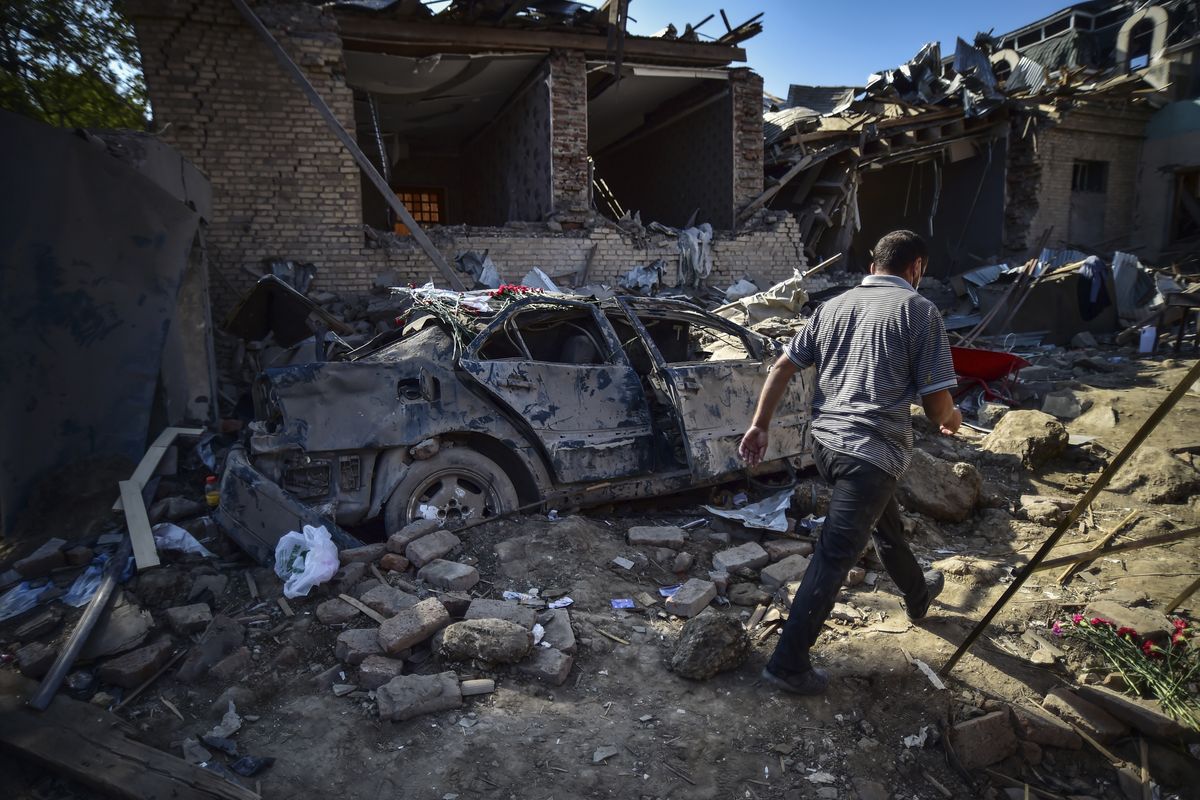Deaths mount in Armenia-Azerbaijan clashes amid truce calls

YEREVAN, Armenia — Death and injury tolls rose Tuesday as fighting between Armenian and Azerbaijani forces raged for a third week over the separatist territory of Nagorno-Karabakh, and the United States urged both sides to adhere to a cease-fire reached over the weekend.
Nagorno-Karabakh military officials said 16 servicemen were killed, bringing the total number of dead among troops to 532 since Sept. 27, when the fighting flared up in the decades-old conflict.
Azerbaijan hasn’t disclosed its military losses, and the overall toll is likely to be much higher with both sides regularly claiming to have inflicted significant military casualties.
Azerbaijani authorities said 42 civilians have been killed on their side since the start of the fighting. Nagorno-Karabakh human rights ombudsman Artak Beglaryan late Monday reported at least 31 civilian deaths in the breakaway region in the past two weeks. Hundreds have been wounded.
The deadly clashes marked the biggest escalation of the conflict over Nagorno-Karabakh, which lies in Azerbaijan but has been under control of ethnic Armenian forces backed by Armenia since the end of a separatist war in 1994.
Foreign ministers from Armenia and Azerbaijan signed a cease-fire deal that took effect Saturday. The plan was brokered by Russia, which has a security pact with Armenia, although Moscow also has cultivated warm ties with Azerbaijan and seeks to mediate in the conflict.
Both Armenia and Azerbaijan have accused each other of continued attacks in violation of the agreement.
On Tuesday, Azerbaijani officials said Armenian forces shelled some of its regions, and Nagorno-Karabakh officials said Azerbaijan launched “large-scale military operations” along the front line.
The fighting has taken a toll on residents of Nagorno-Karabakh. In Stepanakert, the capital of the separatist territory that came under intense shelling last week, people huddle in the basements of apartment buildings or other shelters, fearing new attacks.
Several believers in the town of Shusha prayed Tuesday in the Holy Savior Cathedral, which last week had its dome pierced by a shell.
“We never shoot their temples or ambulances, while they shoot ours. How can we be with them without a cease-fire?” said Artak, a resident who did not give his last name.
U.S. Secretary of State Mike Pompeo tweeted that both countries must “implement their commitments” to a cease-fire and stop targeting civilian areas.
A similar statement came from the so-called Minsk Group, which is working under the auspices of the Organization for Security and Cooperation in Europe and is co-chaired by Russia, France and the U.S. The group’s co-chairs urged the sides to implement a humanitarian cease-fire immediately “to allow the return of remains, prisoners of war, and detainees” and agree to terms of a cease-fire verification process.